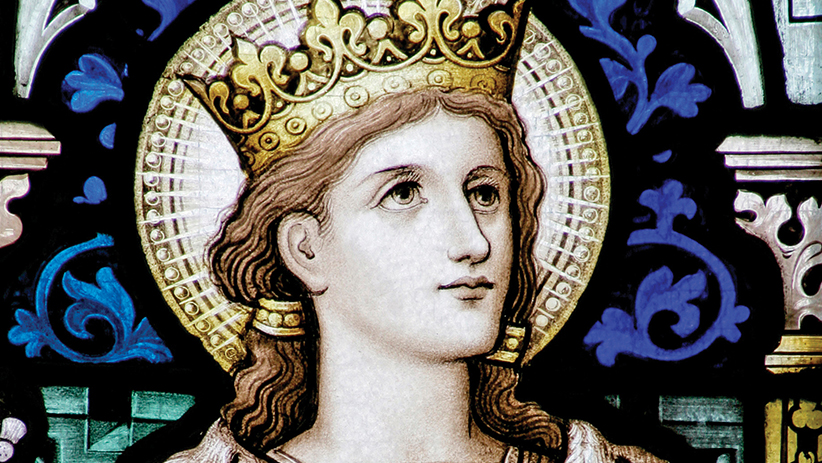St. Margaret of Scotland (1045-93), the granddaughter of an English king, was born in Hungary due to her father’s exile there as a child. Her early years were spent in the Hungarian court, among pious and observant Catholic royals.
Her great-uncle, St. Edward the Confessor, who had succeeded her grandfather, was near death in 1057, and Margaret’s family returned to their native England since her own father was considered a possible successor to his childless uncle. Hardship struck the family yet again when her father died immediately upon arriving back to the land from which he had been exiled years before.
Through a succession of battles and shifts of power, her family lost the English throne, and Margaret’s family fled for safety to Scotland. There, in 1070, Malcom III, King of Scots, married Margaret, desiring a bride who was as a descendant of the Anglo-Saxon throne. Together they had eight children, three of whom would succeed their father on the Scottish throne.
The comfortable and lofty life of royals was undesirable to St. Margaret in many ways, and she sought with all her ability to use her status as a means to better the lives of others spiritually and materially.
Her noble and royal status was not, after all, what constituted St. Margaret’s saintliness. Rather, she was canonized in 1250 on account of a life of holiness. Regarded as a strong woman of valiant character, St. Margaret was convicted intensely in the Faith and was a devoted wife and mother. She knew hardship and suffering, and she embraced them with great virtue.
St. Margaret’s piety was evident in the considerable amount of time she spent in prayer. The saint also illustrated the importance of silence and solitude when she would often retreat to the cloister of a cave for occasions of prayer and quiet reflection. St. Margaret was a voracious reader, particularly of spiritual material. Her husband, who was illiterate, greatly admired his wife’s appetite for books.
The sacraments, especially the celebration of the Mass, was most important to the queen. It is said there were days when she attended as many as six Masses.
St. Margaret would perform charitable acts for the poor. In loving and honoring them, she was loving and honoring Christ. These included washing their feet and serving them food.
St. Margaret was always quick to make a connection between her acts of service to the lowly as an act of sacrifice and worship. She often would be found going to the church so that she could offer up her service in praise of God. The Scottish royal couple set an example for their guests when typically they chose to serve guests before they would eat themselves.
Although her husband was not particularly religious, St. Margaret was unafraid to effectively use her clout with him to advance several projects for the service of the Church. She was instrumental in establishing a ferry for the transportation of pilgrims, and she advocated for a more dedicated observance of the Sabbath throughout the realm.
St. Margaret was a great supporter of Benedictine life in Scotland. She knew the importance of monasteries and their contributions to society, and so she invited the Benedictines to establish a new monastery and was also instrumental in bringing reform and new life to another.
St. Margaret’s husband and eldest son were killed in a siege attack on Nov. 13, 1093. The widow learned of the news on her own death bed. It is believed that a life of austerity and fasting took a toll on her body, and the grievous news had broken her heart. She died three days later. Her feast day is November 16.



